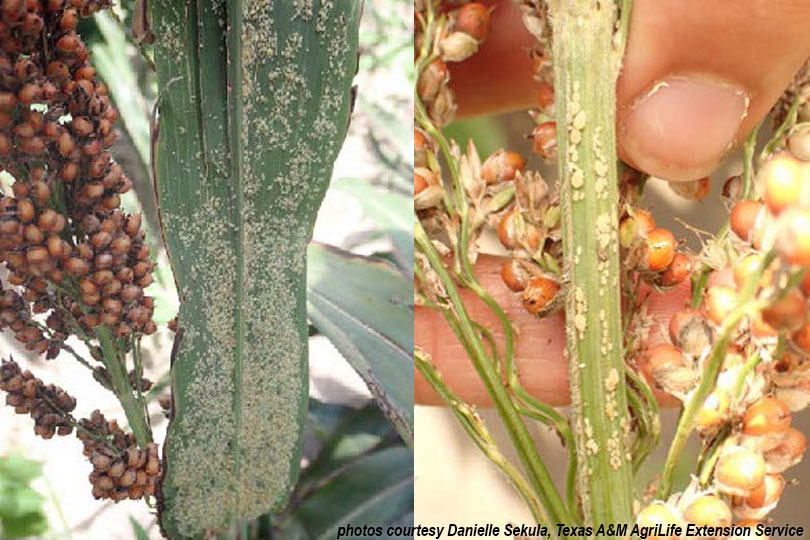By Jennifer Dorsett
Field Editor
Rio Grande Valley farmers are advised to be on the lookout for sugarcane aphid activity.
Grain sorghum that cannot yet be harvested due to recent rainfall has an increased population of sugarcane aphids, which spells trouble for harvest crews in the near future, according to Texas A&M AgriLife Extension Service Integrated Pest Management (IPM) Agent Danielle Sekula.
“I scouted and saw high sugarcane aphid populations in the La Villa, Lyford, Raymondville, Sebastian and Harlingen areas,” Sekula said in her weekly PestCast. “There were a lot of fields with leaves glistening and getting sticky from all the honey dew, and when I would lift up the leaves, they were just loaded with sugarcane aphids.”
Honey dew is the sticky secretion left behind by the pests, and it can gum up machinery and cause combines to break down. Sekula found heavy evidence of winged aphid populations, as well as their young. High heat and rain create the ideal environment for sugarcane aphid reproduction, she added. So, as temperatures climb into the 100s, populations will only increase without treatment.
Sekula recommends applying sulfloxafor (brand name Transform®) at .75 ounces an acre to suppress aphids from traveling up plant stems to the sorghum head. She noted it cannot be applied within 14 days preharvest for grain or straw harvest or within seven days for grazing, forage fodder or hay harvest.
If sorghum was planted later in the season and is in the soft dough or early hard dough stage, Sekula said flupyradifurone (brand name Sivanto™) is a good pesticide choice that can be applied up to 14 days preharvest for dried grain, stover or straw use. She noted it is important to always read any pesticide’s label and follow the instructions as directed by law.
According to Sekula, sugarcane aphids were not able to establish themselves on resistant grain sorghum varieties she planted at the Texas AgriScience research farm, further stressing the importance of proper seed selection for the area and climate.
“The variety of sorghum you choose to plant is important because in those without some sort of tolerance or resistance, it is very easy for sugarcane aphid populations to get established,” she said.
Rio Grande cotton farmers should scout for whitefly and fleahopper presence and treat as necessary, Sekula said. But cotton aphid activity did not seem to be significant at this time.
Sesame crops were looking clean, she added.
For more information on IPM efforts in the Rio Grande Valley and to read past issues of PestCast, visit https://southtexas.tamu.edu/programs-and-services/ipm/.

